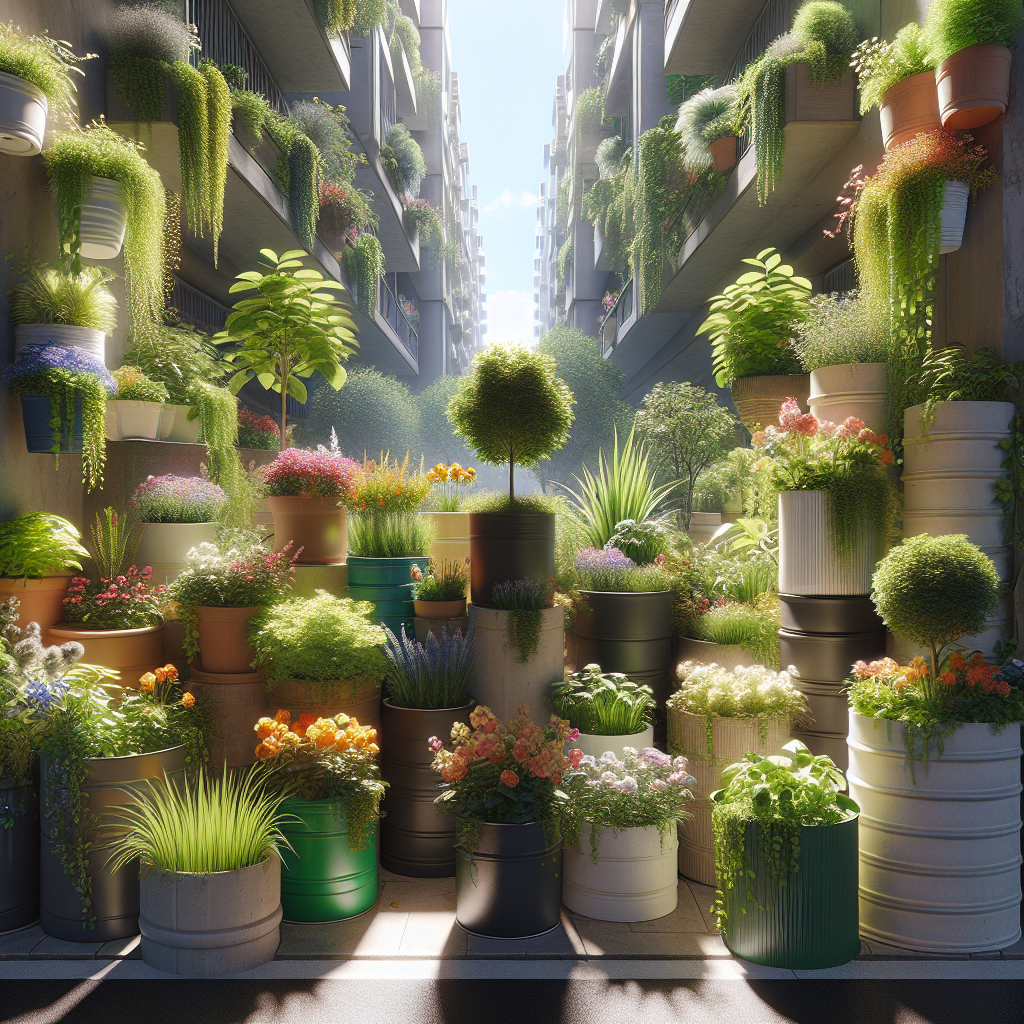Blossoming Urban Spaces with Container gardening
Introduction
Urbanization has been a defining feature of the modern era, creating dense cityscapes characterized by towering buildings, busy streets, and limited green spaces. As cities grow, the need for bringing nature back into these concrete jungles becomes increasingly critical for both environmental and psychological health. One innovative and accessible solution to this challenge is container gardening. This practice involves Growing plants in containers rather than in the ground, making it ideal for urban environments where space is often constrained.
The Rise of Container Gardening in Urban Areas
Container gardening has seen a surge in popularity over recent years, driven by several factors. Firstly, the environmental benefits cannot be overlooked. Plants act as natural air purifiers, absorbing carbon dioxide and releasing oxygen. They also help in reducing urban heat islands by providing shade and through transpiration.
Secondly, there’s an increasing awareness about food security and sustainability among urban dwellers. Growing your own herbs, vegetables, and fruits can significantly reduce reliance on commercial agriculture that often involves long supply chains and substantial carbon footprints.
Next is the aesthetic enhancement container gardens bring to urban settings. A well-placed pot of vibrant flowers or lush greenery can transform a dull balcony or window sill into a visual treat.
Finally, from a psychological perspective, gardening offers numerous mental health benefits including stress reduction, improved mood, and even enhanced cognitive function.
Getting Started with Container Gardening
Starting a container garden is relatively simple but does require some planning. Here are the key steps to set up your urban oasis:
1. Assess Your Space
The first step is to evaluate the space you have available. Whether it’s a small balcony, rooftop terrace, window sill or even an indoor shelf near a sunny window – almost any space can be utilized.
2. Choose Your Containers
Containers come in various shapes, sizes and materials including terracotta pots, plastic planters, wooden boxes or metal tubs. When choosing containers consider:
- Drainage: Ensure containers have holes at the bottom to drain excess water.
- Size: Match the size of your container with the plant’s growth expectations.
- Material: Be mindful of materials as they impact moisture retention; for instance terracotta dries out faster than plastic.
3. Select Suitable Plants
Choose plants based on your local climate conditions and available sunlight exposure.
- Sunny spots (6+ hours of direct sunlight): Ideal for tomatoes, peppers or most herbs like basil.
- Partial shade (4-6 hours): Good for lettuce varieties or radishes.
- Shady areas (less than 4 hours): Consider ferns or ivy which thrive in low-light conditions.
4. Quality Soil Mix
Opt for high-quality potting soil rather than garden soil which may compact too much within containers hindering root growth.
5. Watering & Feeding
Regular watering is crucial as container plants tend to dry out quicker than those planted in-ground due to their enclosed environment; similarly frequent feeding using balanced fertilizers ensures healthy plant growth.
Implementing Urban container gardens on Different Scales
Container gardening offers flexibility that allows implementation across various scales from individual apartments to community projects:
Individual Apartments & Homes
For individual dwellers:
- Balconies/Patios: These spaces provide sufficient room for creative arrangements using hanging pots or tiered plant stands.
- Window Boxes: Perfect narrow spaces infusing life into otherwise unused areas.
- Indoor Gardens: Utilizing shelves near windows creates mini indoor jungles adding freshness indoors especially beneficial where outdoor space isn’t accessible.
Community Spaces & Public Places
On larger scales:
- Rooftop gardens: Significant potentials lie unutilized atop buildings transforming them into green havens contributing towards cooling effects while producing fresh produce if maintained communally by residents.
- Parklets & Sidewalk Gardens : Small parks within parking spaces host portable gardens enhancing public aesthetics promoting social interactions among city inhabitants fostering communal bonds over shared activities such as tending these gardens together.
3.Public Buildings’ Entrances/Courtyards integrating planters improve visitor experiences blending structural architectures seamlessly with nature promoting wellbeing amongst users.
Environmental Impact & Benefits
Container gardening brings multifaceted environmental benefits:
1.Carbon Sequestration via photosynthesis offsetting emissions aiding cleaner air quality within densely populated regions combating pollution hazards effectively ameliorating public health overall positively impacting biodiversity supporting pollinators increasing ecological balance amidst rapid urbanizations preserving green corridors vital sustaining wildlife resilience against anthropogenic pressures globally advocating greener livable future societies worldwide eventually leading sustainable harmonious coexistence between human developments natural ecosystems essentially securing planetary stewardship legacies future generations aspired envision achieving collectively together!
Conclusion
In conclusion ‘Blossoming Urban Spaces With Container Gardening’ illustrates transformative potentials unlocking vast possibilities introducing greenery amidst cimented confines revolutionizing conventional paradigms redefining modern lifestyle choices embedding harmonious coexistence enriching lives both environmentally emotionally through simplest acts nurturing nurturing symbiotic relationship cherished flora encapsulating essence warmth soul cities embracing nature gracefully reflecting true embodiment shared equity inclusive living acknowledging intertwined destinies shaping ubiquitous realities conscious collective mindful practices harmonized pursuit common good inclusive welfare ultimately inspiring brighter greener tomorrow envisioned today!













